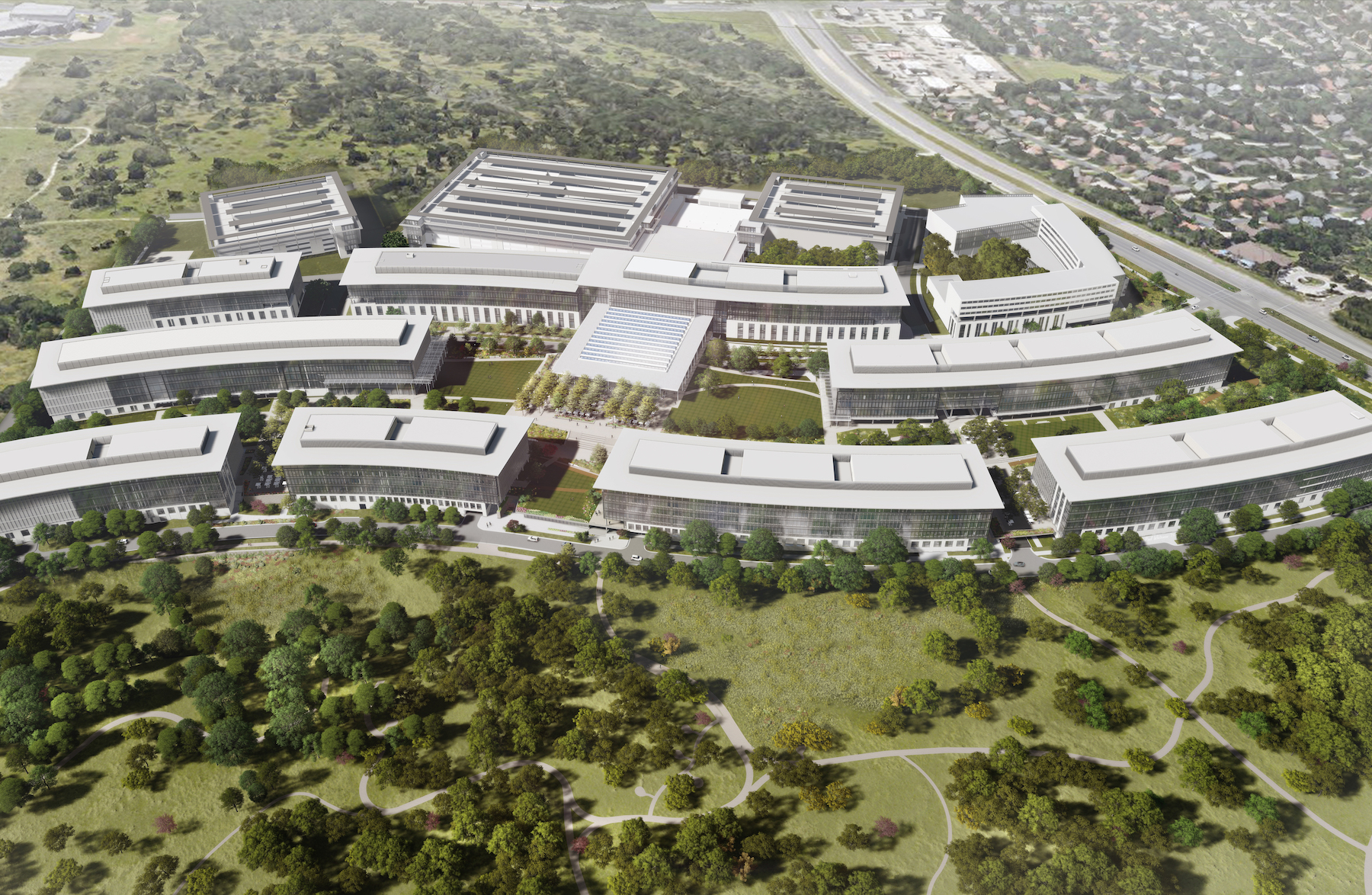For nearly a decade, Austin and San Antonio have been among the country's expanding metros. As far back as eight years ago, an analysis of Texas Water Development Board data, by the website LawnStarter, projected that the 13 counties comprising the Austin-San Antonio corridor would increase to 5.71 million residents by 2030, from 4.27 million in 2014. That gain would equal the population of Jacksonville, Fla.
More to the point, several suburbs along that corridor—prominently San Marcos, New Braunfels, Georgetown, and Cedar Park—were predicted to expand at a faster clip than the aggregate during this period.
If anything, these markets' rate of growth has accelerated since this analysis was made, and has raised the question of whether the 80-mile Austin-San Antonio corridor along Interstate 35 will become a megapolis, a la Dallas-Fort Worth, or if the suburbs will transcend this inevitability and grow distinctly.
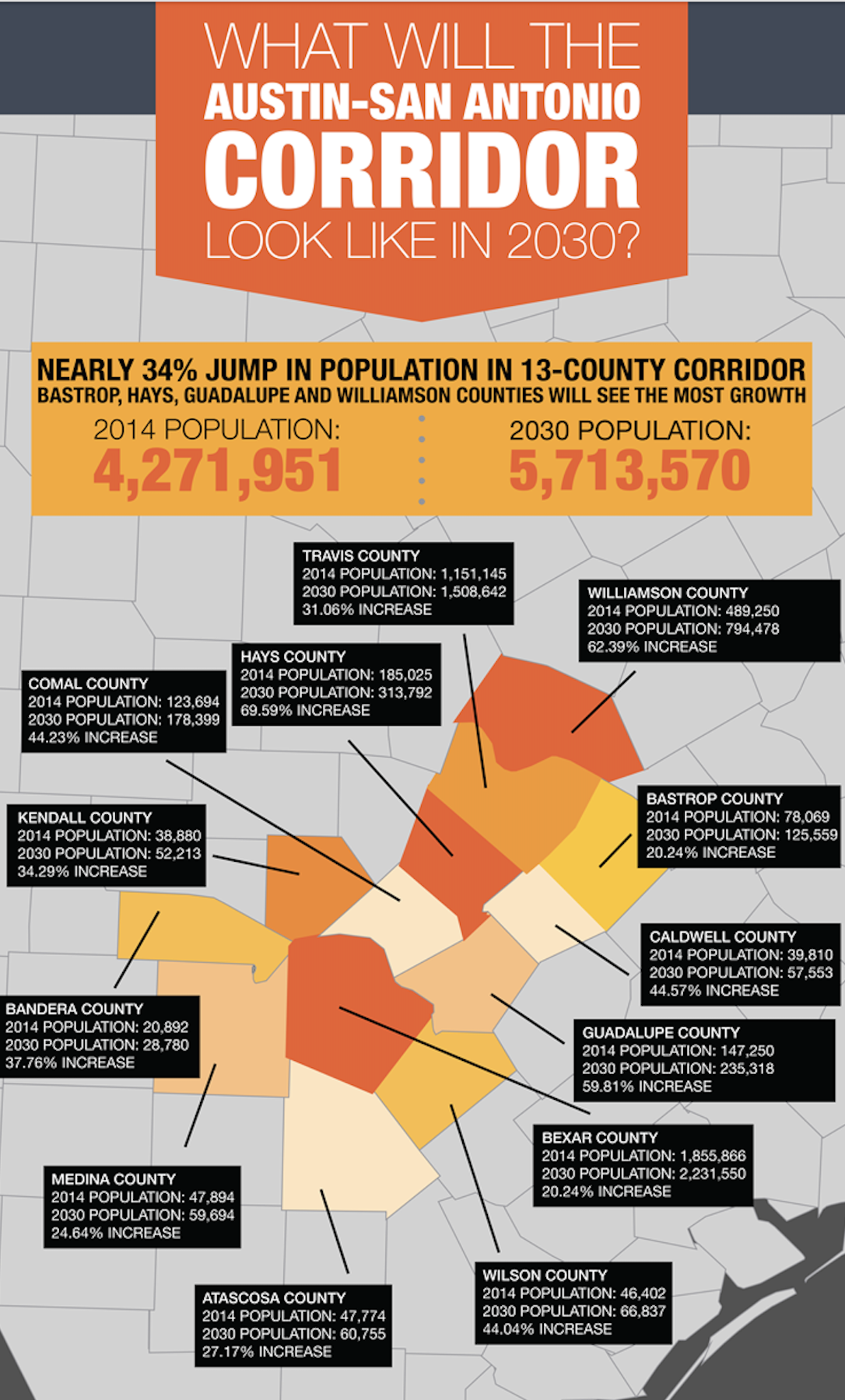
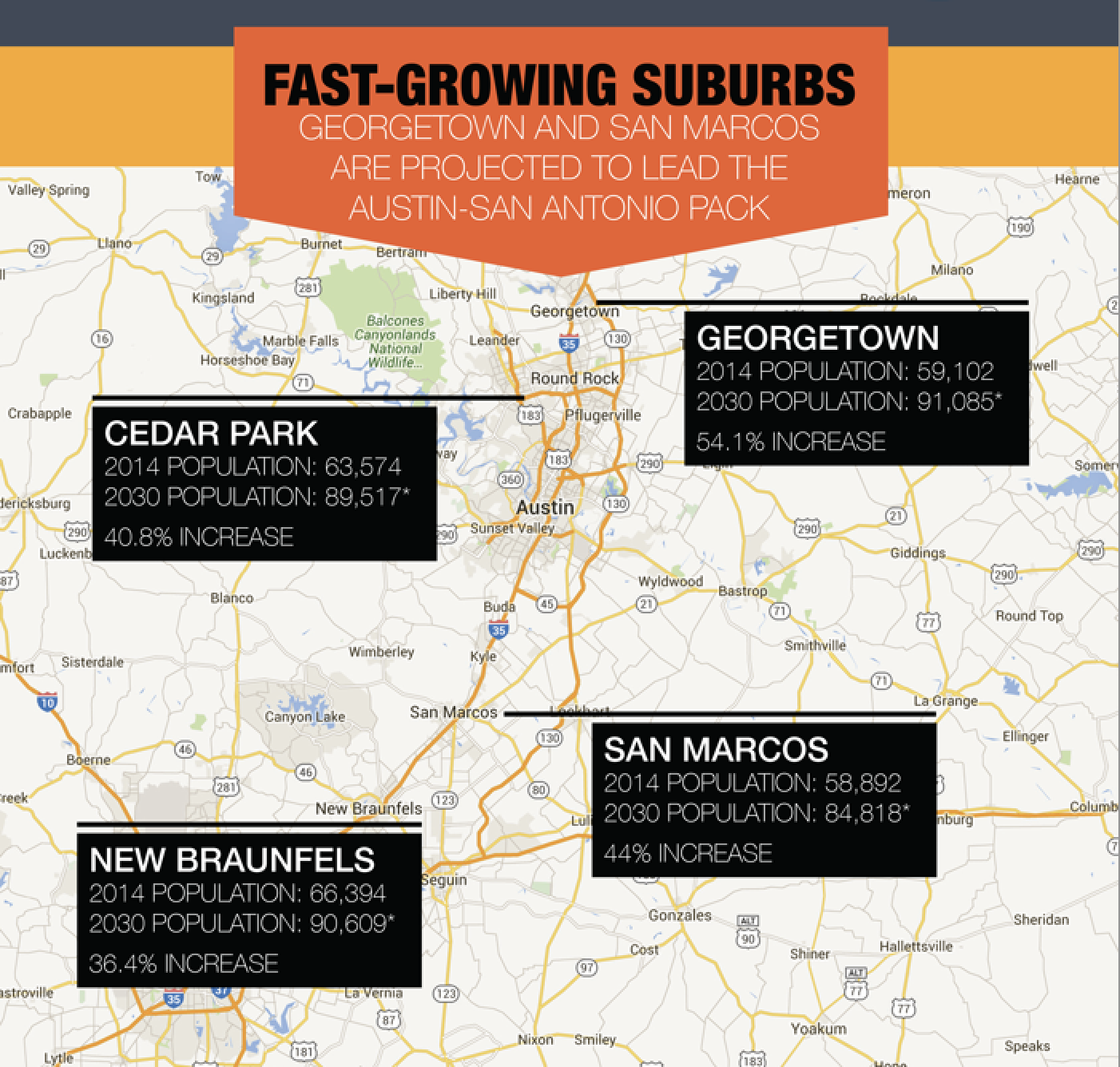
One thing has long been clear: The construction boom that Austin and San Antonio have enjoyed for several years has been spilling into each city’s outlying regions. For example, in July the electronics giant Samsung—which recently announced its plans to build a $17 billion semiconductor facility in Taylor, Texas, 25 miles northeast of Austin—disclosed in documents that it is considering investing another $200 billion to build 11 new manufacturing plants (nine in Taylor, two in Austin) over the next two decades, which would create more than 10,000 jobs.
Twelve miles from downtown Austin, Brookfield Residential Properties’ 2,300-acre Easton Park master plan is about 30 percent completed, according to Brookfield’s Vice President of Land Matt McCafferty, who spoke with BD+C. On August 3, the developer broke ground on the $13 million 25-acre Skyline Park, and when Easton Park is finished in 2032, it will include 350 acres of park space, 14,300 homes in seven neighborhoods, 400,000 sf of office space, and between 160,000 and 200,000 sf of retail.
McCafferty recalls that, five or seven years ago, a drive along I-35 would have revealed a couple of new communities. Now, “there are multiple masterplans” that include two that Brookfield Residential is building in San Marcos: the 575-acre Blanco Vista, which will have 1,800 homes when completed; and an active-adult community named Kissing Tree that’s carved into the foothills of the Texas Hill Country and will have about 3,000 homes upon completion.
“The entire market has a lot of legs, and there’s been tremendous growth from what had been farmlands and sleepy towns into development nodes,” says one knowledgeable market watcher, who requested anonymity.
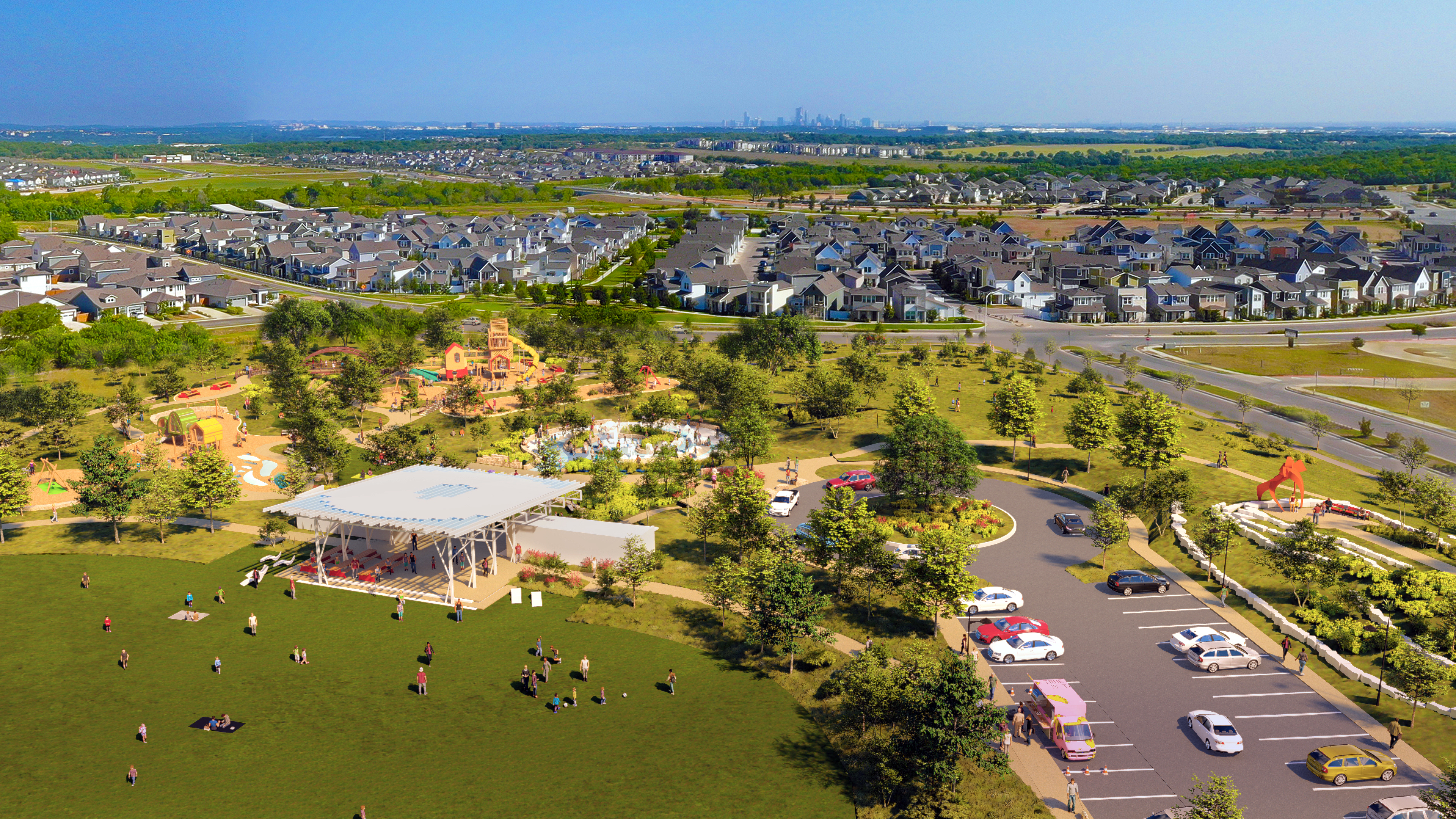
Jonathan Packer, president of the Greater New Braunfels Chamber of Commerce, recently told the Community Impact newspaper that his city’s supply of office and retail space is lagging its population and job growth. “We’ve seen nearly 100 percent absorption of our office market,” he was quoted as saying, despite office inventory in New Braunfels having expanded by more than 11 percent in the past three years, according to CoStar Group estimates.
CoStar also notes that only 2.1 percent of New Braunfels’ total retail space is vacant, and that another 200,000 sf of retail space is under construction.
In April, SouthStar Communities broke ground in New Braunfels on Mayfair, a 1,888-acre mixed-use community that will have 6,000 single- and multifamily for-sale and for-rent homes, pedestrian-friendly restaurants and retail space, and 330 acres of parks and trails. The Real Deal reports that the project’s plans call for four new schools, a highway overpass and infrastructure improvements. Mayfair is expected to take 15 years to complete.
Tech and manufacturing migration
So far, construction in Central Texas has benefited from the state’s aggressive campaign to entice businesses—especially from New York, California, and Illinois—to expand or relocate. One of the highest-profile examples has been the electric vehicle and battery maker Tesla, which earlier this year moved its global headquarters from Palo Alto, Calif., into a $1 billion, 4.2-million-sf Gigafactory situated on 2,000 acres 15 minutes from downtown Austin. (On June 29, Tesla filed with the city of Austin to expand this campus with another 500,000-sf building. And in late August, Telsa CEO Elon Musk via Twitter floated the possibility of building a Hyperloop tunnel that would connect Austin and San Antonio.)
Last January, Facebook’s parent Meta leased all 589,000 sf of office space inside Sixth and Guadalupe, a 2.2-million sf, 66-story high rise designed by Gensler that’s under construction (JE Dunn Construction is the GC) and will be Austin’s tallest building when completed, according to the Austin Business Journal. Chris Szeliga, JE Dunn’s Senior Vice President, tells BD+C that this project is unusual in that 19 levels of Class A office space are owned by Lincoln Property, which specializes in office development, and 32 levels by Kairoi Residential, which develops high-end multifamily. There’s also 14 levels of parking.
Apple, which has had a presence in Austin for a quarter century, this summer completed the first phase of its 133-acre, $1 billion, 12-building campus on West Lake Palmer Lane in Austin—Apple’s largest outside of California—with 3 million sf of office space and the capacity for 15,000 employees, and a 192-key hotel.
Austin—which relishes its “Silicon Hill” sobriquet—was also among the communities where Google announced last April it would spend $9.5 billion on offices and data centers across the U.S. to create at least 12,000 jobs this year. At the time of that announcement, Google had a new office under construction in downtown Austin.
Homebuilding bonanza
With more job opportunities, people have been pouring into this region. The Census Bureau estimated that the San Antonio metro area gained the largest number of newcomers—13,626—in the country between July 2020 and July 2021. And depending on who you talk to, metro Austin is consistently adding between 150 and 180 new residents per day.
In its Austin Multifamily Market Report for the second quarter of 2022, Marcus & Millichap estimates that by the end of this year, 60,000 more people will be living in Austin than two years ago. “The burgeoning tech scene, favorable climate, and attractive lifestyle are drawing a horde of new residents.” Marcus & Millichap also points out that Austin’s 8.9 percent job expansion last year was the second-fastest among major U.S. markets, and that Austin expects to create 55,000 new jobs this year.
Szeliga, who was born in Philadelphia and has lived in Colorado, moved to Austin nine years ago. He says this city’s quality of life “is its main draw,” with its moderate weather, Hill Country and lakes, and vibrant nightlife and music scene. He seconds other contractors who laud Texas’ “pro business” governance and its wealth of academic institutions from which companies can draw talent.
One of JE Dunn’s recent design-build projects was Waterloo, a 30-story, 373,000-sf apartment tower, the tallest of its kind in the University of Texas west campus district. The tower offers 241 student housing apartments on 25 resident levels, with four floors of above-grade parking, and ground-floor engagement and activation spaces.
All this business and population influx has accelerated the need for new housing. In its Austin Multifamily Trend Report for the second quarter of 2022, ApartmentTrends.com stated that 12 projects with 4,056 units started construction, bringing the total to 197 properties with 51,037 units under construction. Developer expectations are for 22,000 completions over the next 12 months, with another 32,000 in the following 12 months. This would increase the average quarterly additions to roughly 6,000, or twice the current average. More than two-fifths of these future multifamily units are expected to be concentrated near new and expanding industry within Austin’s eastern sectors.
Reshaping the built environment
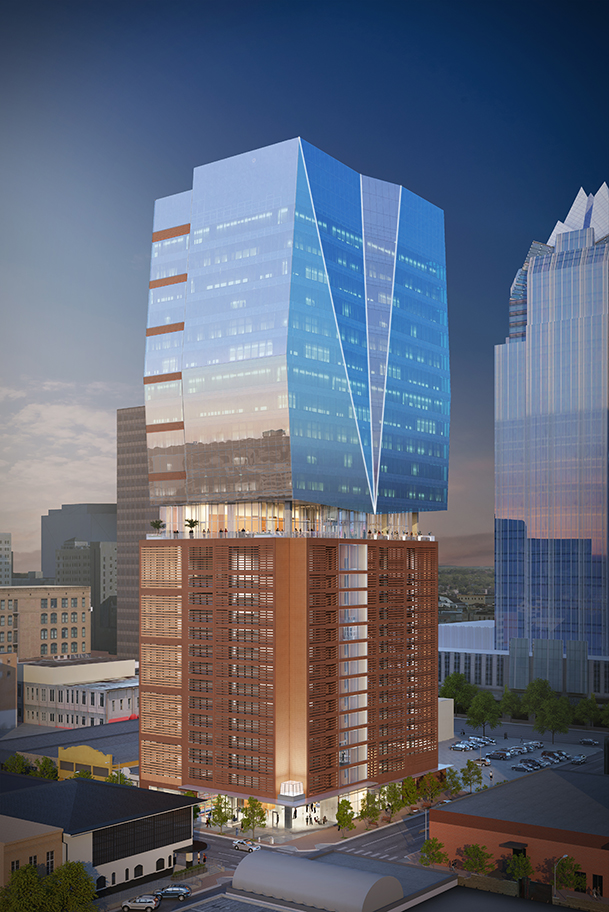

In late January 2021, the Austin Business Journal’s “Crane Watch” reported that there were 9 million sf of office space under construction in Austin, more than one-third of which in the city’s Central Business District. In total, 43 projects were under development or construction at that time.
Since then, numerous new commercial developments have sprung to life. Among those that are expected to reshape Austin—according to the website Austonia.com—include the $1 billion, 425-acre mixed-use development East Village, in the heart of the northeast tech corridor, which when completed in 2028 will have three hotels, 2,500 housing units, 810,000 sf of office space, and 319,000 sf of retail and restaurant space; the $895 million Texas Capitol Complex construction and renovation, which will be completed in three phases; and the 97-acre River Park mixed-use development, which is expected to start construction in 2023 and, when completed, have 10 million sf of offices, shops, hotels, parks, and homes.
405 Colorado, a 25-story, 465,210-sf high rise completed in July 2021, was the first tower developed under the Austin Green Streets program, which sets parameters for the streetscape’s future development. (The site includes lots that were part of the Original City in Austin.) Duda|Paine Architects, the project’s designer, and Brandywine Realty Trust, its developer, conceptualized the building—on the corner of an established downtown district—as being flexible enough to accommodate any tenant’s workspace needs. Its amenities include a 4,000-sf outdoor terrace on level 14, and a fitness center.
Hensel Phelps’ Southwest district office in Austin will generate around $700 million in revenue this year. This GC’s recent Austin-area projects include expanding the University of Texas’ football stadium by enclosing its south side for the addition of eight suites and loge seating; designing and building a county courthouse at Guadalupe and 17th streets; and, in 2020, adding nine gates to Austin’s airport, with another gate expansion scheduled to start next year. In November 2020, Hensel Phelps completed the Kalahari Resort & Convention Center in Round Rock, a $500 million, 975-key project with 30 water slides, 20 pools, 20 onsite dining options, and a 150,000-sf convention center.
Brad Winans, Hensel Phelps’ Vice President and District Manager, points out that his company has yet to fully exploit the growth in and around San Antonio because “we’re so busy in our key areas. In San Antonio, you need bodies on the ground, and we’re not considered a ‘local’ builder there yet.” Contrarily in Austin, developers have been known to bring in contractors from other cities states for local projects, he says.
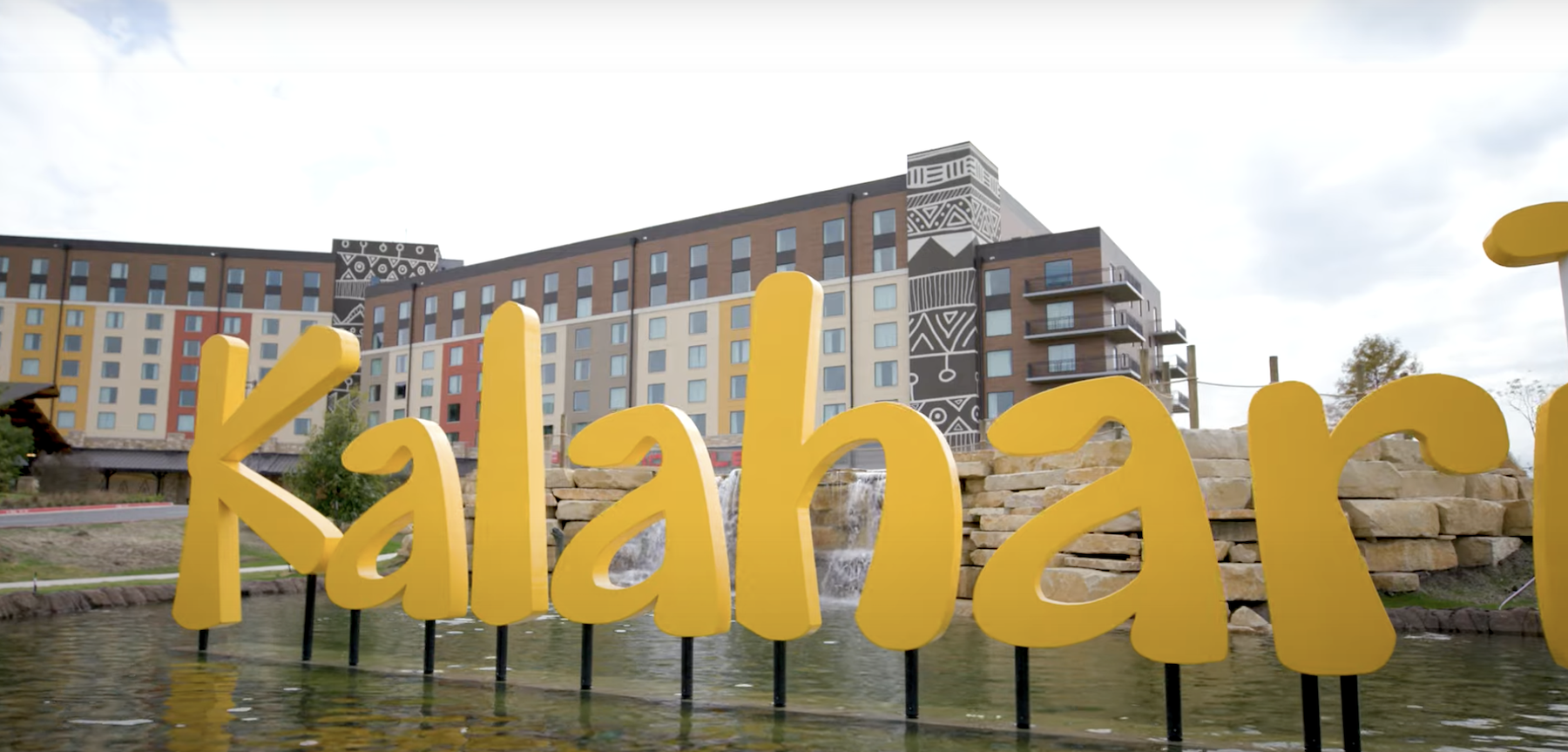
Suburbs plotting their own futures
Winans’ observations speak to how cities along I-35 corridor have their own personalities, and are just as likely to pursue their own development agendas.
Take, for example, San Marcos, which has had success attracting new businesses. “We’re benefiting from the two cities, but we’re also standing alone,” says Jason Guilietti, president of the San Marcos Partnership, a two-county economic development group. Last year, the Partnership negotiated 14 deals with companies that either agreed to move to San Marcos or expand their existing presence. Those deals generated $400 million in investment. Through August 2022 (the 11th month of the Partnership’s fiscal year), 11 more deals were struck, with $2 billion in investment commitments.
Guilietti tells BD+C that San Marcos’ investment pipeline has increased from $2 billion in 2020 to an estimated $100 billion in 2022. He notes that a $25 million, 63,000-sf medical marijuana facility, built by Parallel, recently opened; and that Hill County Studios is building a $267 million film and TV production center on 209 acres. “We’re also seeing a lot of advanced manufacturing coming here.”
Guilietti says that Hays and Comal counties have been preparing for accelerated economic activity by investing in infrastructure that includes constructing Interstate 30, which runs parallel to I-35. More developers are interested in the land between the two highways, he says.
Keeping up with infrastructure demands remains a concern for an area where urban and suburban growth is rampant. “These [infill] towns are getting more [development] funding than ever, but there’s a shortage of people so they’re struggling to keep up with demand for infrastructure and permitting,“ says Winans of Hensel Phelps. JE Dunn’s Szeliga lives in a suburb called Dripping Springs, where he says there’s a moratorium on development because of wastewater management issues.
“And I don’t think demand has peaked yet,” says Ryan Therrell, Director of Business Development for The Beck Group, the architecture and construction firm. He characterizes Austin’s residential sector as “super hot,” and the eventual emergence of an Austin-San Antonio megapolis as “real.”
Among Beck Group’s recent projects are River South, a 15-story 350,000-sf Class A office building that touts itself as the smartest building in the country to date. Beck also designed and is building the new headquarters for the Texas Bankers Association, and just started ALTO, a 110,000-sf office and mixed-use building in East Austin’s Saltillo Overlay District.
What worries Therrell, and several of his colleagues, is that the corridor’s development will outpace the area’s labor availability. Their concerns aren’t unfounded: Last year, Associated General Contractors of America (AGC) and Autodesk Construction Cloud surveyed 164 construction companies in Texas, and found that nearly one-third had more than 10 unfilled craft positions, and 91 percent said they were grappling to find qualified candidates, especially bricklayers, carpenters, and equipment operators.
Phil Phoden, CAE, President and CEO with AGC’s chapter in Austin, agrees that labor “is always the No. 1 issue,” and that growth is stretching the local workforce thinner. But he also asserts that the industry somehow manages to meet development demand. He points anecdotally to Tesla’s Gigafactory, which despite its doubters was built quickly by drawing tradespeople from other counties and states with higher compensation and other incentives (including hotel stipends) in exchange for increasing workweek hours.
To sustain development and growth along the Austin-San Antonio corridor, Phoden says AGC has been advocating for a solution that would allow more immigrant labor into the U.S. seasonally. AGC also encourages contractors to diversity their workforces to include more women and minorities, and to supplement that workforce with greater use of technology, such as drones.
Right now, labor shortages are seen as an inconvenience rather than an impediment to development and construction. Regardless of whether the Austin-San Antonio corridor becomes more monolithic, or its infill markets blossom under their own sunlight, developers and contractors remain confident that this market will be among the country’s leading jobs and people magnets for years to come. Winans singles out the suburbs of Bastrop and Lockhart—the latter being where Micron Technology is considering investing at least $20 billion through 2030 for a semiconductor factory—as being “on the verge” of breaking out. To which Szeliga adds: “Success begets success.”
[Editor's note: A few sections of this article were rewritten for clarity, and the information about Micron Technology was added, after the story's initial posting.]
Related Stories
The Changing Built Environment | Sep 23, 2024
Half-century real estate data shows top cities for multifamily housing, self-storage, and more
Research platform StorageCafe has conducted an analysis of U.S. real estate activity from 1980 to 2023, focusing on six major sectors: single-family, multifamily, industrial, office, retail, and self-storage.
Multifamily Housing | Aug 21, 2024
Nation's leading multifamily developer expands into infrastructure
Greystar's strategy for infrastructure is driven by the shifting landscape of today's cities—primarily in the increased digitization, urbanization, and transitions to clean energy.
MFPRO+ News | Jul 22, 2024
6 multifamily WAFX 2024 Prize winners
Over 30 projects tackling global challenges such as climate change, public health, and social inequality have been named winners of the World Architecture Festival’s WAFX Awards.
Apartments | Jun 4, 2024
Apartment sizes on the rise after decade-long shrinking trend
The average size of new apartments in the U.S. saw substantial growth in 2023, bouncing back to 916 sf after a steep decline the previous year. That is according to a recent RentCafe market insight report released this month.
Office Buildings | Jun 3, 2024
Insights for working well in a hybrid world
GBBN Principal and Interior Designer Beth Latto, NCIDQ, LEED AP, ID+C, WELL AP, share a few takeaways, insights, and lessons learned from a recent Post Occupancy Evaluation of the firm's Cincinnati, Ohio, office.
Sustainable Development | May 10, 2024
Nature as the city: Why it’s time for a new framework to guide development
NBBJ leaders Jonathan Ward and Margaret Montgomery explore five inspirational ideas they are actively integrating into projects to ensure more healthy, natural cities.
Sustainability | Mar 13, 2024
Trends to watch shaping the future of ESG
Gensler’s Climate Action & Sustainability Services Leaders Anthony Brower, Juliette Morgan, and Kirsten Ritchie discuss trends shaping the future of environmental, social, and governance (ESG).
Mass Timber | Feb 15, 2024
5 things developers should know about mass timber
Gensler's Erik Barth, architect and regional design resilience leader, shares considerations for developers when looking at mass timber solutions.
Urban Planning | Feb 5, 2024
Lessons learned from 70 years of building cities
As Sasaki looks back on 70 years of practice, we’re also looking to the future of cities. While we can’t predict what will be, we do know the needs of cities are as diverse as their scale, climate, economy, governance, and culture.
Industry Research | Jan 31, 2024
ASID identifies 11 design trends coming in 2024
The Trends Outlook Report by the American Society of Interior Designers (ASID) is the first of a three-part outlook series on interior design. This design trends report demonstrates the importance of connection and authenticity.


